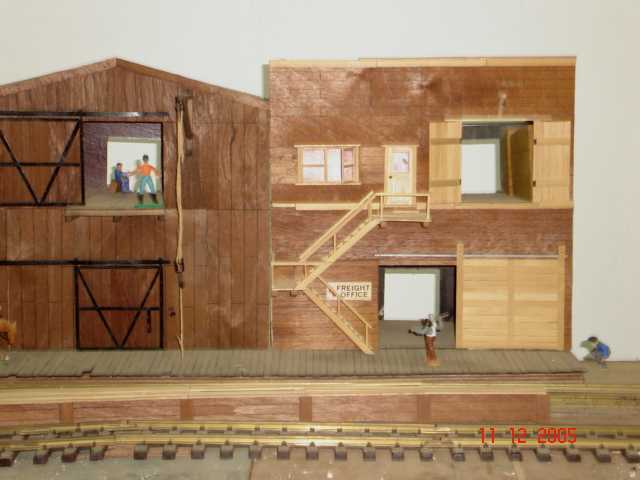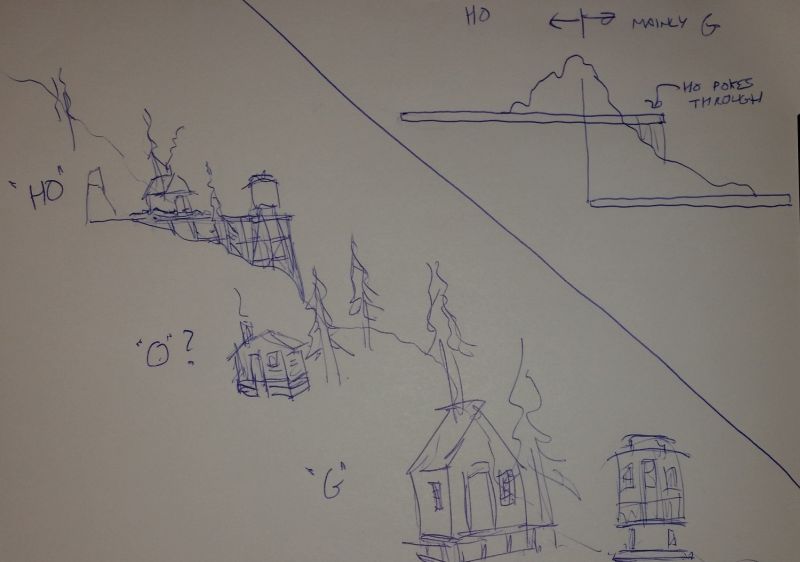interesting, how many different concepts turned up as “blending”.
for me - “blending” of scales is connecting a foreground with a background of different (smaller) scale.
for doing that, there must be respected some fundamentals:
both “layers” must tell the same story. - a 1:22.5 wild west layer does not combine with an Amtrack H0 background.
the bigger the difference in scales, the more pronunciated horizontal dividers (hedges, buildings, etc.) are needed.
an example: between the lower Large Scale layer and the higher H0 layer a single row of mountain or hills is not enough.
but a two inch broad hill with some bigger bushes at the front and some smaller ones at the (higher) far end, which is followed by a gap of an inch and then a mountainside, that is made similar (0-scale trees below in front, H0-scale trees up and back two inches behind) would do the job.
(if you got lots of space, some N-scale buildings or facades behind the H0 line would not hurt)
think theatre: you dont need to cheat the observers. they know, it is just a model. you just have to help their own imagination to the desired direction.
on a former, unfinished layout i had a station with freight depots, one could look through.
45mm track - 4" platform - 1:32 facades - forced perspective floor and freight - 1:45 scale posterior wall - 4" mainstreet - H0 scale facades a horsecart and some figures in H0.
the only problem with this kind of forced blending of scales is, to take in account different possible positions of the observers.
after many years and various data losses, i did find just one (very bad) pic that shows at least the 1:32 to 1:45 blending.


